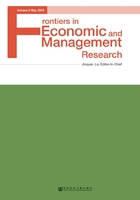
2 Variable Selection, Data Processing and Description
2.1 Variables selection and data processing
In this paper, using the urban resident population urbanization rate represents the urbanization development level (UR); urban and rural residents per capita consumption expenditure respectively represents urban residents’ consumption (UC) and rural residents’ consumption (RC); urban residents’ consumption structure (UE) and rural residents’ consumption structure (RE) are expressed respectively by the corresponding Engel coefficient, this common approach is consistent with the existing literature.
For the data, the paper chooses panel data of 31 provinces (autonomous regions and municipalities) from 2002-2014 to analyze empirically, and all data is from the National Bureau of Statistic website, the regional statistical yearbooks and CEI statistical database. For data processing, the following three points should be noted. First, we use the panel data, given the situation before 2002, most provinces data missing is serious, so our sample range is set to 2002-2014. Second, to ensure comparability of data, consumption expenditure price index data was inflation adjusted, specifically, we use region consumer price index (CPI) to adjust and take 2002 as base period. Third, in the calculation process, to ensure the smoothness and ease of interpretation of the data, we will use the natural logarithm of the data processing.
2.2 Urbanization rate and urban and rural residents’ consumption
Since the 1980s, with the continuous deepening of reform and opening up and industrialization, rapid urbanization increased demand for labour, while the government has gradually eased restriction on rural-urban migration, along with a huge scale migration process. Overall, China’s urbanization has a low starting point, and fast development momentum, especially in the mid-1990s, urbanization has entered a stage of rapid development. Table 1 shows that from 1978 to 2015, the number of urban resident population increased from 170 million to 770 million, and the proportion of urban population increased from 17.9% to 56.1%, with average growth of nearly 1.03% per year; since 2011, the proportion of urban resident population has already exceeded 50%.
Table 1 The History Change of Urban and Rural Population

From the change trend of consumption level of urban and rural residents (Figure 1), the consumption level of urban and rural residents sustained rises along with the rapid growth of China’s economy. However, consumption of urban residents increased faster than rural residents, the gap between the two is still very evident. In Figure 2, the propensity to consume of urban residents shows a declining trend, indicating that faster growth of income level, and with the upgrading of the life standard of urban residents, in general, more money will be spent on financial management and investment; on the contrary, rural residents’ propensity to consume is relatively stationary and has an increase in recent years, indicating that slow income growth is not enough to support their consumer demand, cannot even meet their essential living expenditures.

Figure 1 Urban and Rural Residents’ Consumption Level Trend

Figure 2 Urban and Rural Residents’ Consumption Propensity Trend